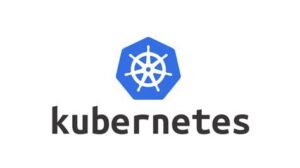
Kubernetes, often abbreviated as K8s, is an open-source platform for automating the deployment, scaling, and management of containerized applications. Originally designed by Google, Kubernetes has become the de facto standard for container orchestration and is widely adopted by organizations to run and manage applications at scale. Kubernetes empowers developers and system administrators to ensure that their applications run reliably across a variety of environments, whether on-premises or in the cloud.
What is Kubernetes? 🧑💻
At its core, Kubernetes is a container orchestration platform that provides the tools needed to automate the management of containers. Containers are lightweight, portable, and consistent across environments, but they can become complex to manage at scale. Kubernetes simplifies container management by offering automation features like scaling, self-healing, and deployment rollouts.
While containers help isolate and package applications with their dependencies, Kubernetes allows organizations to manage multiple containers that work together as a unit—something that becomes especially important as the number of containers grows in production environments. Kubernetes abstracts away the complexity of managing individual containers and ensures that they work in harmony.
Key Concepts of Kubernetes 🔑
Before diving deeper into Kubernetes, it’s crucial to understand its key components. These concepts are foundational to working with Kubernetes effectively:
- Pod 🥇: A pod is the smallest deployable unit in Kubernetes. A pod can hold one or more containers that share the same network and storage. Pods are used to represent a running process in the cluster and are typically used to deploy an application or service.
- Node 🌐: A node is a physical or virtual machine that runs containers in Kubernetes. Each node has the services required to run containers, including the container runtime (e.g., Docker), kubelet, and kube-proxy.
- Cluster 📦: A cluster is a set of nodes that work together to run containerized applications. It consists of a master node and worker nodes. The master node manages the cluster state, while worker nodes run the applications.
- Deployment 📈: A deployment manages the deployment of pods, ensuring that the desired number of replicas are available and automatically replacing unhealthy pods.
- Service 🌍: A Kubernetes service is an abstraction layer that exposes a set of pods as a network service. Services ensure communication between components by providing stable IP addresses and DNS names.
- Namespace 🔄: Namespaces are a way to divide a Kubernetes cluster into multiple virtual clusters, organizing resources within the cluster.
Why Use Kubernetes? 🚀
Kubernetes has become the go-to solution for container orchestration due to several key benefits:
- Automated Container Orchestration 🤖: Kubernetes automates many container management tasks such as scheduling, load balancing, scaling, and health checks.
- Scalability 📊: Kubernetes can scale applications horizontally (by adding more pods) and vertically (by increasing node resources), enabling dynamic scaling to meet demand.
- High Availability 🔄: Kubernetes ensures that applications are highly available by rescheduling failed containers, replacing unhealthy pods, and distributing pods across multiple nodes.
- Self-Healing 💪: Kubernetes automatically monitors and replaces unhealthy containers, ensuring continuous application performance.
- Declarative Configuration 📑: Kubernetes allows defining the desired state of applications using YAML or JSON files, and ensures that the cluster matches the desired state.
- Multi-cloud and Hybrid Cloud Support ☁️: Kubernetes is cloud-agnostic and supports multi-cloud and hybrid cloud environments.
How Kubernetes Works 🔧
Kubernetes follows a master-slave architecture, where the master node controls the cluster and manages its state, while the worker nodes run application workloads. Key components of the master node include:
- API Server 🖥️: The API server is the entry point for managing the Kubernetes cluster, exposing the API for interaction.
- Controller Manager 🏃: The controller manager ensures the desired state of the cluster is maintained, taking corrective actions as needed.
- Scheduler 📅: The scheduler assigns pods to nodes based on factors like resource availability and constraints.
- Etcd 💾: Etcd is a distributed key-value store that holds the cluster state and configuration data.
Worker nodes consist of:
- Kubelet 🧑💻: The kubelet ensures containers are running and healthy on each worker node.
- Kube-Proxy 🌐: Kube-proxy manages network rules for pod communication and service routing.
- Container Runtime 🏃♂️: The container runtime is responsible for running containers, supporting Docker, containerd, and CRI-O.
What Can You Do with Kubernetes? 🛠️
Some powerful use cases for Kubernetes include:
- Microservices Architecture 🔄: Kubernetes simplifies managing microservices applications, ensuring scalability and fault tolerance.
- Zero Downtime Deployments 🚫: Kubernetes supports rolling updates for continuous deployment without downtime.
- On-Demand Scaling 📈: Kubernetes dynamically adjusts the number of pods based on demand.
- Hybrid Cloud Deployments ☁️: Kubernetes supports hybrid and multi-cloud deployments, avoiding vendor lock-in.
Conclusion ✅
Kubernetes is essential for managing containerized applications at scale. It automates deployment, provides high availability, and offers robust scaling and self-healing features. As a cornerstone of modern cloud-native application development, Kubernetes enables organizations to operate efficiently and scale their applications across various environments.
Views: 11